On 07 April 2021, Pathfinder Foundation ([PF) and Vivekananda International Foundation organised a webinar on ‘Connectivity between India and Sri Lanka’. Dr Arvind Gupta, Director VIF, welcomed the participants and delivered the opening remarks. The webinar included brief presentations by Professor Rohan Samarajiva, Mr Bipul Chaterjee, Mr Sanjay Chadha, and Dr Ravi Rathnayake, followed by remarks from Mr Abdul Azeez, Additional Secretary, Ministry of Foreign Affairs, Sri Lanka. The webinar is part of a series of webinars to understand the prospects of connectivity between India and Sri Lanka. Mr Bernard Goonetilleke, Chairman, PF, also welcomed the participants and gave introductory remarks.
The webinar attempted to analyse the current situation, the importance of connectivity for bilateral and people to people relations, challenges and the future prospects. A general overview of connectivity between India and Sri Lanka can be studied froma historical perspective. It is important to identify challenges to further deepen connectivity and utilise existing opportunities is important. The connectivity between the two countries was better 50-60 years ago.
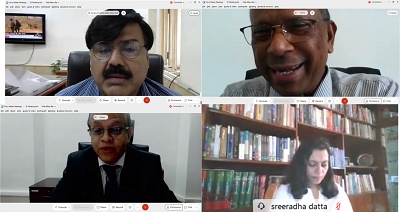
India-Sri Lanka trade is USD 5 billion trade; four billion in favour of India. India is also the second-largest trade destination, after the United States. India is the largest source of FDI and tourists to Sri Lanka. Sri Lanka’s geographical location is important; at the confluence of the Bay of Bengal and the Indian Ocean and closer to the Indo-Pacific region. The connectivity initiatives being taken up by India are aimed at nurturing and expanding connectivity with the neighbours. There is a need to revive old historical routes, for example, the Pamban Bridge. Currently, Colombo and Hambantota ports are important. Religion is an important means of enhancing connectivity. Another issue that has often been a bilateral irritant is the illegal fishing in the Gulf of Mannar.
Two essential areas referred to by the speakers are ports and ship-based transportation and cross border trade in electricity. The fundamental infrastructure issue is the discreet transactions or overall regime or system within which various things happen. For example, Colombo port is not considered the 24th largest container port, and 70 per cent of the cargos are either from India or to India. However, India does not recognise this as a resource of Sri Lanka, a port that is efficient as per world standards and does not silt. There are apprehensions about selling electricity to Sri Lanka, that it would in some way give control to India. However, the speaker stated that such fears are unfounded and illogical. The air connectivity has improved, as the two countries are closely linked, be it economic, social or religious. The other area of cooperation is the railways; which has existed as a British legacy. Sri Lanka had, till 2005, massive cooperation with RITES and Indian Railways. Therefore, the focus should be on developing tourist circuits, small ferries to connect with the east coast of India and others.
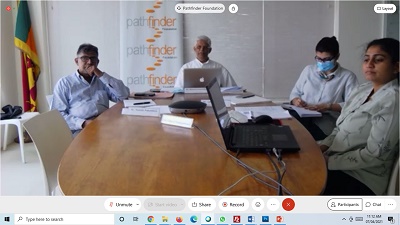
Keeping national security a priority, it is also important to build mutually beneficial regimes to ensure cross-border trade. The rules for cross-border trade must be framed in consultation with neighbouring countries; as the unilateral actions implicate the country’s benefits and trust. Trade, investment and knowledge sharing are three pillars of economic relationship. There are a number of areas, such as electricity, disaster management, climate-smart agriculture and renewable energy. There is a need to strengthen the institutional mechanism for increasing connectivity. One such institutional mechanism is BIMSTEC which could be used to formulate concrete action plans.
Another area of discussion was trade and the impact and potential of Regional Trade Agreements (RTAs) and Bilateral Trade Agreements (BTAs) between two countries under SAARC/SAAFTA, APTA, and BIMTEC. At present, there is underutilisation of RTA/BTAs because of narrow liberalisation, too long negative list, less awareness of concessions, and hidden barriers on imports. The myth about the Indo-Sri Lanka Free Trade Agreement (ISFTA) being favourable to India is also false. Sri Lanka used ISFTA for its exports at 99 per cent; and India’s usage of the free channel was lower than that of Sri Lanka (68 per cent), i.e. around six per cent in 2015. There are also two myths in Sri Lanka about ETCA. First, ETCA would destroy industries, jobs and services in Sri Lanka. And, secondly, the ISFTA is favourable to India. In this context, one needs to understand that there is no complaint from the side of industries regarding the functioning of FTA. Based on the H6 Harmonised System of UN, Sri Lanka has a comparative advantage in category six and nine; which involves a range of 509 products such as textile and clothing, leather products and others. But still Sri Lanka is not exporting to India, and instead sending it to the world. The reasons for this are SPS/TBT measures.
The speaker used WITS Partial Equilibrium Model (PEM) and Computable General Equilibrium Model (CGE) results were stated during the discussion. Under the PEM, when India cuts negative lists to zero, Sri Lanka exports would rise by USD 345 million; and when Sri Lanka cuts the negative list to zero, and then imports from India would rise by USD 342 million. The overall impact of ETCA under different scenarios of liberalisation was evaluated for 2020 and 2030. The ETCA was found to be contributing to GDP positively and improving exports to India by three per cent. The speaker suggested the “ETCA Support System” to make ETCA successful.
Dr Gupta and Mr Nakandala made the concluding remarks. Trade and connectivity are essential areas of study to enhance bilateral and regional integration. The discussion underlined the importance of increasing connectivity between the two countries. The regional forum like BIMSTEC and others would be further examined to promote regional connectivity in the days ahead.

_2.jpg)
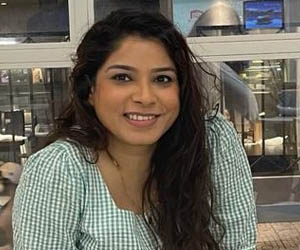

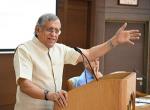

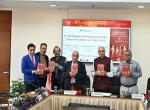
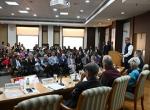
Post new comment